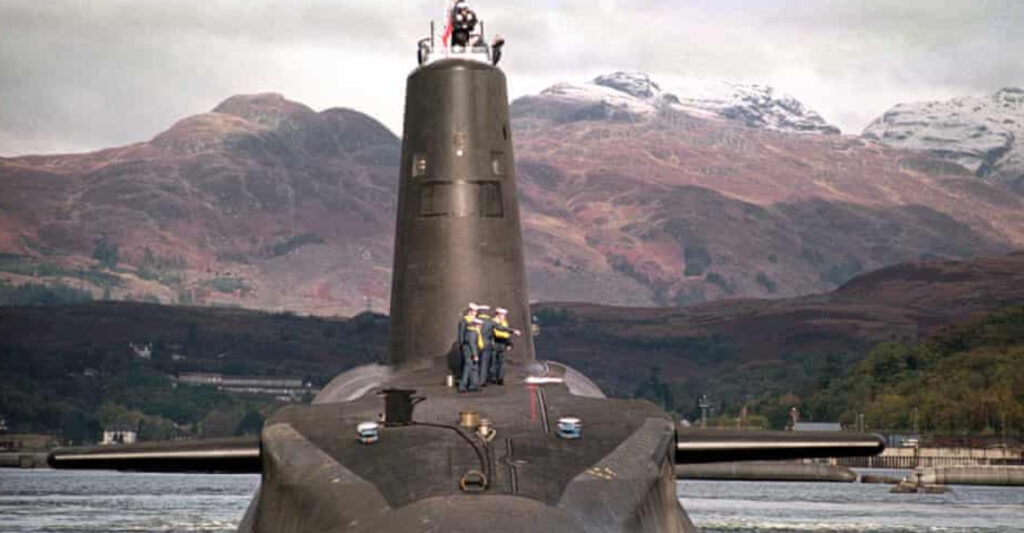The UK is reportedly lagging behind in responding to Russia’s deep-sea espionage tactics, after military sources revealed that Kremlin-installed spy sensors had been discovered in waters around Britain. The devices are believed to have been targeting the Royal Navy’s Vanguard-class submarines, which are equipped with the UK’s nuclear deterrent.
Former defence and Foreign Office minister Tobias Ellwood warned that the UK is now “in a greyzone war with Russia,” and called for an urgent expansion of Britain’s maritime surveillance capabilities. The focus keyword Russian spy sensors near Royal Navy submarines underscores growing fears over the UK’s vulnerability to undersea sabotage and espionage.
Russian Deep-Sea Surveillance Tactics Threaten UK Submarine Security
The devices—some found by the Royal Navy, others washed ashore—are suspected of being part of Moscow’s “greyzone warfare” strategy, which involves non-conventional operations like sabotage and surveillance without open conflict. The revelations, first reported by The Sunday Times, have not been officially confirmed by the UK government, but are viewed by insiders as a serious national security concern.
Ellwood said the sensors are “only half the story,” alleging that Russia has deployed remote seabed platforms off the UK coastline. These platforms reportedly serve as recharging hubs for mini-submarines that could be used to map and potentially sabotage undersea cables critical to national infrastructure.
Britain’s Deep-Sea Defenses ‘Not Enough,’ Say Security Experts
“Our resilience does not match the threat we face,” Ellwood told The Guardian. “Ninety percent of our data travels undersea and 60% of our gas arrives from Norway through a single pipeline. The damage Russia could do is enormous, cheap, and deniable.”
Although he welcomed the commissioning of the Royal Fleet Auxiliary (RFA) Proteus—Britain’s flagship deep-sea surveillance ship—Ellwood insisted it’s insufficient to counter the scale of the threat. “One ship isn’t enough. We need at least half a dozen of these vessels to properly monitor and deter Russian activity,” he said.
Suspicious Incidents in Baltic Raise Red Flags Over Russia’s Shadow Fleet
The Estlink 2 submarine cable between Finland and Estonia was damaged on Christmas Day, just weeks after two telecom cables were severed in Swedish waters. Investigators linked the damage to a Russian tanker, Eagle S, allegedly part of President Vladimir Putin’s “shadow fleet” used for covert sabotage missions.
These events have intensified scrutiny of Russia’s undersea tactics and raised fears of more incidents targeting NATO maritime infrastructure.
Ministry of Defence Vows Stronger Maritime Security Response
While the UK Ministry of Defence (MoD) described The Sunday Times report as “speculation,” it affirmed the government’s commitment to defending offshore infrastructure. “National security is the foundation of this government’s plan for change,” said a MoD spokesperson. “We are stepping up defence spending, including an extra £5 billion for this year and a plan to raise spending to 2.5% of GDP by 2027.”
The MoD also reiterated that the UK’s continuous-at-sea nuclear deterrent remains fully operational and undetected.
UK Adopts More Proactive Stance, But Experts Say More Is Needed
Armed Forces Minister Luke Pollard told MPs that Britain had adopted a more proactive stance in response to Russian threats but stressed the need for measured action: “In the event of any actions being taken against UK infrastructure, we would look at all the options available to us.”
Yet experts and former officials argue that Britain must rapidly expand its capabilities to keep pace with Russia’s increasingly aggressive undersea strategy.


